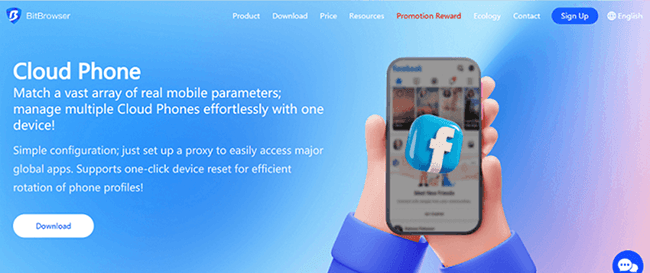


How to Create a Free PHP CAPTCHA Bypass Service (For Your Own Sites)
 2025.08.05 19:02
2025.08.05 19:02CAPTCHA (Completely Automated Public Turing test to tell Computers and Humans Apart) is designed to stop bots from abusing online forms, creating fake accounts, or scraping content. It’s a vital tool for web security — but it can sometimes get in the way during legitimate processes like automated testing, accessibility tools, or bulk administrative tasks on your own platforms.
Important: Bypassing CAPTCHA on websites you do not own or without permission is illegal in many countries and violates most site terms of service. The steps below are only for websites you control — such as your own e‑commerce store, blog, or SaaS app.
In this guide, we’ll walk you through:
- Creating a simple CAPTCHA in PHP
- Building a bypass mechanism for your own system
- Making it useful for automated tests and accessibility
2. Understanding How CAPTCHA Works
Before we create a bypass, we need to understand how CAPTCHA is generated.
A typical PHP CAPTCHA system:
- Generates a random string (e.g.,
"h4yP7") - Stores it in the session
- Creates an image (or audio) containing that string
- Displays it in a form
- Validates the submitted answer against the session value
For bypassing your own CAPTCHA in a controlled environment:
- We can programmatically fetch the stored CAPTCHA value from the session
- Or temporarily disable CAPTCHA checks for specific test users, IPs, or API keys
3. Creating a Simple CAPTCHA in PHP
Let’s first create the CAPTCHA generator.
File: captcha.php
<?php
session_start();
// Generate a random string for CAPTCHA
$code = substr(md5(mt_rand()), 0, 5);
$_SESSION['captcha_code'] = $code;
// Create the image
header("Content-Type: image/png");
$image = imagecreate(120, 40);
$bg = imagecolorallocate($image, 255, 255, 255); // White background
$text_color = imagecolorallocate($image, 0, 0, 0); // Black text
imagestring($image, 5, 35, 10, $code, $text_color);
imagepng($image);
imagedestroy($image);
?>
File: form.php
<?php session_start(); ?>
<form action="verify.php" method="post">
<p>Enter the CAPTCHA:</p>
<img src="captcha.php" alt="CAPTCHA Image"><br><br>
<input type="text" name="captcha">
<input type="submit" value="Submit">
</form>
File: verify.php
<?php
session_start();
if ($_POST['captcha'] == $_SESSION['captcha_code']) {
echo "CAPTCHA correct! Form submitted.";
} else {
echo "Incorrect CAPTCHA. Please try again.";
}
?>
Now we have a working CAPTCHA system.
4. Building the Bypass Script (For Testing Purposes)
If you’re running automated tests (e.g., Selenium, Puppeteer, or cURL scripts) on your site, constantly solving CAPTCHAs is a headache.
Here’s how to build a bypass only for trusted test environments.
Option 1: Direct Session Access
If the script making the request can access session data, it can automatically retrieve the CAPTCHA code and submit it.
Example: bypass.php
<?php
session_start();
// Directly get the CAPTCHA code from session
$captcha_code = $_SESSION['captcha_code'];
// Simulate form submission
$_POST['captcha'] = $captcha_code;
// Check
if ($_POST['captcha'] == $_SESSION['captcha_code']) {
echo "Bypass successful! CAPTCHA matched.";
} else {
echo "Bypass failed!";
}
?>
Option 2: Disable CAPTCHA for Specific Users/IPs
You can skip CAPTCHA checks entirely when a request comes from:
- A certain IP address (e.g., your office or test server)
- A logged‑in admin account
- A special test API key
Example:
<?php
session_start();
$trusted_ips = ['127.0.0.1', '192.168.1.100'];
if (in_array($_SERVER['REMOTE_ADDR'], $trusted_ips)) {
echo "CAPTCHA bypassed for trusted IP.";
} else {
// Run normal CAPTCHA validation
if ($_POST['captcha'] == $_SESSION['captcha_code']) {
echo "CAPTCHA correct.";
} else {
echo "Incorrect CAPTCHA.";
}
}
?>
Option 3: API‑Based Bypass
For larger projects, you could create a hidden API endpoint that returns the CAPTCHA code to authorized requests — useful for automated scripts.
Example: captcha_api.php
<?php
session_start();
$api_key = $_GET['key'] ?? '';
if ($api_key === 'MY_SECRET_KEY') {
echo json_encode(['captcha_code' => $_SESSION['captcha_code']]);
} else {
http_response_code(403);
echo json_encode(['error' => 'Unauthorized']);
}
?>
Your automation script can then fetch the CAPTCHA code with:
curl "https://yoursite.com/captcha_api.php?key=MY_SECRET_KEY"
5. Security Tips & Ethical Use Cases
While CAPTCHA bypassing for your own sites is fine, it must be controlled carefully.
Best Practices:
- Never expose the CAPTCHA code publicly without authentication
- Limit bypasses to specific IP addresses, API keys, or user roles
- Disable bypass in production for public users
- Consider alternative CAPTCHAs for accessibility (e.g., audio, simple math questions)
Ethical Use Cases Include:
- Automated QA testing for your own website
- Speeding up admin panel workflows
- Helping visually impaired users skip visual CAPTCHAs
- Preventing test environments from blocking legitimate automation
6. Conclusion
A PHP CAPTCHA bypass service can be a powerful tool — when used ethically. By creating both the CAPTCHA and the bypass mechanism yourself, you gain full control over automation and accessibility without breaking the law or violating site rules.
The approach we’ve outlined here:
- Builds a secure, simple CAPTCHA
- Offers multiple safe bypass options
- Keeps your systems protected from abuse
- Ensures compliance with legal and ethical standards
Remember: with great power comes great responsibility. Use CAPTCHA bypass only on systems you own and control — never to exploit others.
 petro
petro
 Multi-Account Management
Multi-Account Management Prevent Account Association
Prevent Account Association Multi-Employee Management
Multi-Employee Management



